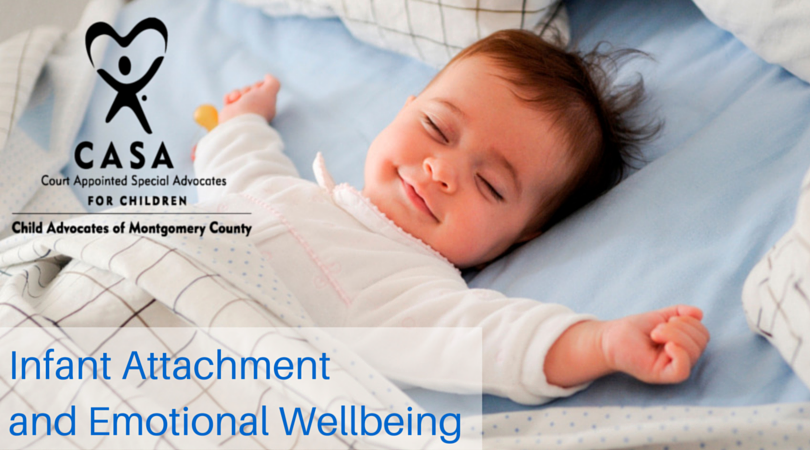Infant Attachment and Emotional Well Being

British psychologist John Bowlby, the first attachment theorist, described attachment as a “lasting psychological connectedness between human beings.”
Some of the earliest behavioral theories held that attachment was simply a learned behavior based on feeding of the infant. Bowlby observed that even feedings did not diminish the anxiety children separated from their primary caregivers experienced. He discovered that attachment is characterized by clear behavioral and motivation patterns. Frightened children seek proximity to their primary caregiver, thereby receiving both comfort and care.
When a baby cries and the caregiver soothes and comforts, the child learns trust. Can you imagine growing up not knowing who to turn to for protection and comfort? Victims of child abuse or neglect have been removed from their parents care to protect their own well-being, but they still experience pain, confusion and emotional distress, including anxiety.
What happens to infants who do not receive a response to their cries or are actively abused?
The abused or neglected child is less likely to develop secure attachment relationships and experiences higher rates of behavior problems, attention disorders and mood disorders. Many maltreated infants suffer serious disturbances in their attachments to caregivers, and, as they mature, in relationships in general. Attachment disorders affect the way the individual’s beliefs about self and others, interfering with interpersonal functioning and regulation. In some instances, these children refuse to turn to caregivers for protection and comfort and exhibit difficulty with closeness to the point of apathy and withdrawal.
It is a sad fact that disrupted placements are common. When moved from caregiver to caregiver, the child may develop Reactive Attachment Disorder, a severe attachment-related problem. With this disorder, the usual bond between infant and parent is not established or is broken.
In normal conditions, infants form an emotional attachment to a caregiver by the time they’re eight months old. From approximately the second through the eighth month, most of them respond to attention from a range of familiar caregivers. However, by that eighth month, normal infants have established a strong emotional preference for one or two primary caregivers. If separated from them, they become distressed. Interference in this normal bonding, as with abused and neglected children, can result in severe emotional and physical consequences that follow the individual for the remainder of his or her life.
What is the CASA’s role with infant attachment?
The first requisite is to understand the types of situations most conducive to healthy attachment and to advocate for them.
What can a CASA Advocate actually do to help this displaced infant?
- Consider attachment theory in each case. Ask, “Who does the child see as a psychological parent?” Determine if the child’s attachment relationships have affected his or her development. Find out what the child’s attachments needs are now and in the future.
- Point out the attachment issues in the case and challenge others involved with the infant to consider them when making decisions.
- Let decisions be based on what’s in the child’s best interests.
- Prevention should be the focus. Create opportunities for stable placements and minimize placement changes.
Bowlby and others proposed that children are born with an innate drive to form attachments. Help us help these children who want and need to form a healthy bond with someone. CASAs safeguard the welfare and emotional wellbeing of victims of child abuse and neglect. Won’t you join us in our efforts to secure a safe and happy today and better future for these children?
Become a CASA Volunteer today and learn how to protect abused and neglected children from infant attachment disorders that can affect his or her entire life.
